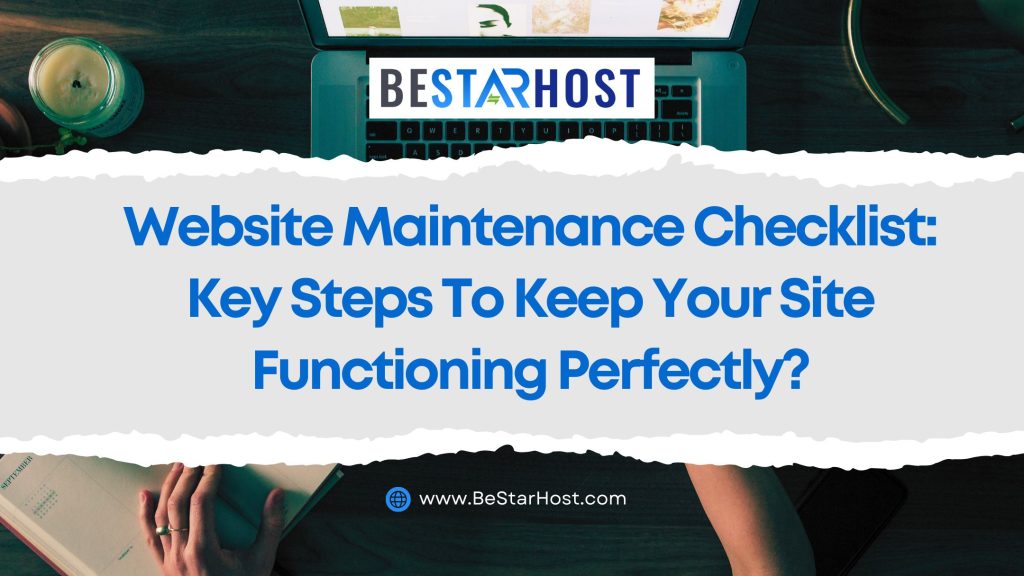 A well-maintained website is essential for ensuring a seamless user experience, improving search engine rankings, and safeguarding your site from security threats. Regular website maintenance tasks are necessary to prevent performance issues, broken links, and outdated content. In this guide, we’ll provide a comprehensive website maintenance checklist covering website security maintenance, website performance optimization, and website functionality monitoring to keep your site in top shape.
A well-maintained website is essential for ensuring a seamless user experience, improving search engine rankings, and safeguarding your site from security threats. Regular website maintenance tasks are necessary to prevent performance issues, broken links, and outdated content. In this guide, we’ll provide a comprehensive website maintenance checklist covering website security maintenance, website performance optimization, and website functionality monitoring to keep your site in top shape.
Why Regular Website Maintenance Is Essential
Maintaining a website isn’t just about adding new content; it involves ensuring that all elements function smoothly. Neglecting maintenance can lead to slow loading times, broken features, security vulnerabilities, and even lower search rankings.
Here are some reasons why regular website maintenance tasks are critical:
- Improved Security – Regular updates and security checks help prevent cyberattacks.
- Better User Experience – Fixing broken links, optimizing speed, and ensuring mobile responsiveness enhance usability.
- Higher SEO Rankings – Search engines prioritize well-maintained sites with fresh content.
- Increased Conversions – A smooth, error-free website keeps visitors engaged and boosts sales.
Now, let’s dive into the key website maintenance tasks you should perform regularly.
Weekly Website Maintenance Checklist
1. Check Website Functionality and Performance
To keep your site running smoothly, perform a website functionality monitoring check at least once a week.
- Test all contact forms, sign-up buttons, and checkout processes.
- Verify that navigation menus, search bars, and interactive elements work properly.
- Ensure the website loads correctly on different devices and browsers.
- Look for any broken links or 404 errors and fix them promptly.
2. Perform Website Security Maintenance
Cybersecurity threats are constantly evolving, so website security maintenance should be a top priority.
- Update all software, plugins, and themes to the latest versions.
- Scan for malware, vulnerabilities, and suspicious activities.
- Review user accounts and permissions to prevent unauthorized access.
- Ensure that SSL certificates are valid and properly configured.
3. Backup Your Website
Frequent backups help protect against data loss in case of cyberattacks or server failures.
- Schedule automatic backups of your website files and databases.
- Store backups in multiple locations, such as cloud storage and local drives.
- Test backups by restoring them on a test server to ensure they work correctly.
Monthly Website Maintenance Checklist
4. Optimize Website Performance
A fast-loading site is crucial for both user experience and SEO. Monthly website performance optimization helps maintain speed.
- Use Google PageSpeed Insights to analyze loading speed.
- Optimize images, CSS, and JavaScript files for faster page loads.
- Enable caching and content delivery networks (CDN) to reduce latency.
- Minimize redirects and eliminate unnecessary plugins.
5. Review and Update Website Content
Fresh content keeps visitors engaged and improves search engine rankings.
- Update outdated blog posts, service pages, and product descriptions.
- Check for grammar, spelling, and formatting issues.
- Ensure all images, videos, and infographics are relevant and working properly.
- Review SEO elements like meta descriptions, title tags, and keywords.
6. Conduct a Website Security Audit
Beyond weekly checks, a more detailed security audit should be done monthly.
- Scan for SQL injection, XSS vulnerabilities, and brute force attacks.
- Ensure firewalls and security plugins are up to date.
- Test login protection measures, such as CAPTCHA and two-factor authentication.
- Review privacy policies and GDPR compliance.
Quarterly Website Maintenance Checklist
7. Analyze Website Traffic and SEO Performance
Tracking website performance helps identify areas for improvement.
- Use Google Analytics and Search Console to monitor traffic trends.
- Analyze bounce rates, session duration, and top-performing pages.
- Review keyword rankings and backlinks for SEO improvement.
- Conduct an SEO audit to fix broken links, duplicate content, and indexation issues.
8. Test Website Mobile Responsiveness
With mobile traffic increasing, your site must be fully responsive.
- Use Google’s Mobile-Friendly Test to check for issues.
- Test touch-friendly navigation and button sizes.
- Ensure pop-ups and ads don’t interfere with user experience.
- Optimize font sizes and images for mobile viewing.
9. Review Website Compliance and Legal Pages
Stay compliant with industry regulations and avoid legal issues.
- Update privacy policy, terms of service, and cookie policy.
- Ensure compliance with GDPR, CCPA, or other data protection laws.
- Verify that disclaimers, refund policies, and accessibility guidelines are in place.
Annual Website Maintenance Checklist
10. Evaluate Website Design and User Experience
A yearly review ensures your website remains modern and user-friendly.
- Assess if your website design needs a refresh.
- Conduct user testing to identify usability issues.
- Check if your brand messaging and visuals align with current goals.
11. Audit Website Hosting and Security Protocols
Your hosting provider plays a major role in your site’s performance and security.
- Review hosting plans and upgrade if needed.
- Test server response time and uptime reliability.
- Ensure DNS records, email configurations, and domain renewals are up to date.
12. Plan for Future Improvements
- Set new performance, SEO, and content goals for the coming year.
- Research emerging web technologies and trends to stay competitive.
- Assess if your CMS, themes, or plugins need an upgrade.
Final Thoughts
A well-maintained website is a powerful asset for any business. By following this website maintenance checklist, you ensure that your site remains secure, fast, and optimized for the best user experience.
Regular website performance optimization, website functionality monitoring, and website security maintenance will help prevent costly downtime and ensure your website remains an effective tool for growing your business.
Start implementing these regular website maintenance tasks today and keep your website running flawlessly!
